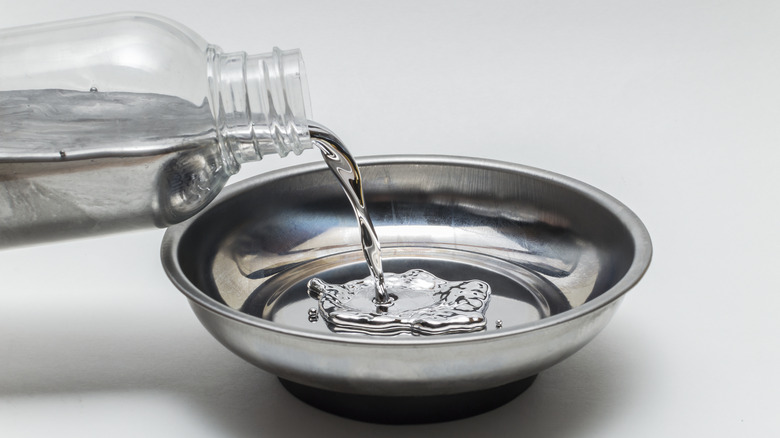How Silent Light Switches Work (And Why They're Illegal In The US)
If you're keen on smart home accessories, you might have a wireless smart switch in your home. However, many homes will still use traditional light switches, most of which will make a clicking sound when turned on and off. Some older homes or buildings, though, might have light switches that don't make a sound when toggled. These switches are no longer legal for sale in the U.S., and haven't been since the early '90s. They operate silently because of their construction, which differs from a modern, sound-making light switch.
Inside these silent light switches is a small amount of mercury contained in a capsule. When someone flicks the switch, the capsule moves, and thus so does the mercury inside it. At one end of the capsule is an electrical contact, which completes the circuit and illuminates the light when it comes in contact with the mercury. Flicking the switch again moves the capsule back to its starting point; the mercury flows back to the other side and turns the light off.
It's a simple and effective system, but there's one big drawback: Mercury is toxic and will quickly contaminate the environment around it if it leaks from the capsule. That's why manufacturing silent light switches has been illegal in the U.S. since 1991, although buildings that had them installed before the ban might still have them today.
The dangers of mercury
Household light switches aren't the only types of switches that have previously used mercury. Older cars used mercury in both light switches and ABS sensors, and states such as California have specific laws to govern the disposal of these automotive switches when a car is crushed or scrapped. Various household appliances, including freezers and washing machines, also used mercury switches, although their use in these appliances has now been banned for at least 25 years.
A mercury switch could be dangerous if the capsule broke and the mercury drained out of it. However, the bigger problem arises when all of these appliances and devices reach the end of their working lives. If they're sent to a landfill, mercury can leak out of them over time and contaminate a nearby water supply. Animals exposed to the water can then consume small amounts of mercury, which concentrates within their muscles over time. As well as being harmful to the animal itself, the mercury can then eventually find its way up the food chain and be consumed by humans.
Mercury exposure is particularly dangerous to children and can cause a variety of serious health problems, including nervous system damage, skin problems, and cognitive impairment. So, cutting down the chance of mercury contamination benefits both the environment and human health, which is why it's no longer allowed to be used in devices like light switches.

